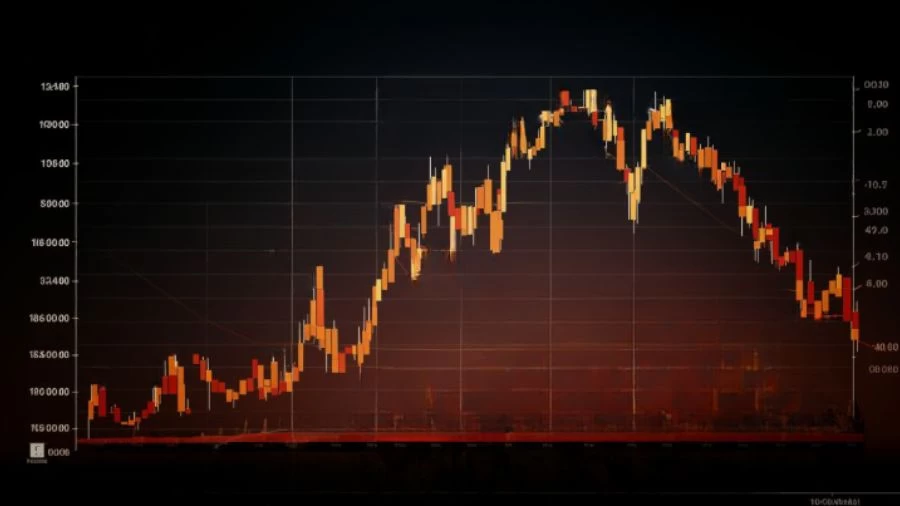
What is the 10 Year Treasury Yield? How Did the 10-Year Treasury Yield Reach 4.80%?
Despite low reported inflation, the 10-Year Treasury Yield went up to 4.80% from around 4.5% initially because investors became worried about future inflation, when people fear rising prices, they seek higher yields on their investments for protection.
Published Oct 05, 2023 | Updated Oct 05, 2023 | 📖 3 min read
What is the 10 Year Treasury Yield?
The 10-Year Treasury Yield is like the interest rate the government pays when people lend them money for 10 years. When this yield goes up, it can affect things like stock prices. Recently, it reached a high not seen in 16 years because of a few reasons. There were more job openings than expected, which made people think interest rates might go up more.
Also, there was good news about manufacturing and construction, and a deal to keep the government running without a shutdown. All of this made the 10-Year Treasury Yield go up. Some people worry that if it keeps going up too fast, it could cause problems for the economy. So, it's a bit uncertain right now, and some are concerned that the Federal Reserve might raise interest rates too quickly, which could be risky for the economy.
How Did the 10-Year Treasury Yield Reach 4.80%?
The 10-Year Treasury Yield reached 4.80% despite a recent report showing low inflation. This might seem a bit surprising, but here's what happened:
Initially, the 10-year Treasury yield was at around 4.5% because there was news of low inflation, meaning prices for things weren't rising very quickly. People often invest in Treasury bonds when they expect inflation to stay low because they want a safe place to put their money.
However, the yield went up to 4.81% on Tuesday. One reason for this increase is that even though there was low inflation reported on Friday, other factors may have made investors worry about inflation rising in the future. When people think inflation might go up, they often demand higher yields on their investments to protect against losing money in the future due to rising prices.
The Federal Reserve, led by Jerome Powell, has been watching this closely. They want to see more consistent low inflation for about six months before they become confident that inflation is staying low. In August, a key measure of inflation called the core PCE inflation rate eased a bit to 2.9%, down from 3.4% in July. While it's getting closer to what the Fed wants to see, it's not quite there yet.
So, the 10-Year Treasury Yield reached 4.80% because of concerns that inflation might start going up, even though the recent report showed it was low. Investors are being cautious and demanding higher yields as a safety measure.
MarketsHost offers a comprehensive array of resources, making it a one-stop hub for everything related to Economy and financial well-being.
What are the Other Factors Causing Rise in Treasury Yield?
One key reason is the increase in the supply of Treasury bonds. The government's needs for money have gone up because of bigger budget deficits, which means they have to sell more Treasury bonds to cover their expenses. Additionally, before Congress raised the debt limit in June, the government had used up its cash reserves held at the Federal Reserve, so they needed to borrow more.
This increased supply of Treasury bonds can put upward pressure on their yields. The Federal Reserve has been reducing its holdings of Treasury bonds and other securities as part of its quantitative tightening program. This means they are selling off up to $95 billion worth of these bonds every month. When the Fed sells more bonds, it can increase the supply in the market, which can also push yields higher.
What is the 10 Year Treasury Yield - FAQs
1. What is the 10 Year Treasury Yield?
The 10-Year Treasury Yield is the interest rate the U.S. government pays on a 10-year loan.
2. How did the 10-Year Treasury Yield reach 4.80%?
It rose due to concerns about future inflation, strong job market data, and the Federal Reserve's plans to increase interest rates.
3. Why are real interest rates rising?
Real interest rates are increasing because the Federal Reserve believes higher rates are needed temporarily to control inflation.
4. What caused the recent rise in construction spending?
Construction spending rose due to ongoing growth, particularly in manufacturing-related projects.
5. What factors are contributing to the rise in Treasury yields?
Increased Treasury supply due to deficits, a need to replenish cash reserves, and the Fed's selling of bonds are pushing Treasury yields higher.




